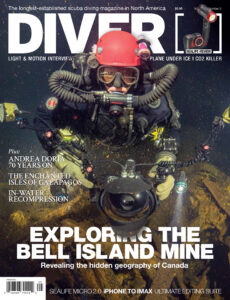THE PROJECT
Extinctions and the ice age
Some 11,000 years ago, vast glaciers covered much of North America, trapping ocean water and lowering sea level. For reasons we don’t
understand, large mammals such as mammoths and mastodons suddenly went extinct. The islands of the Caribbean also experienced an extinction event, but these animals – which included certain species of sloth – survived until at least 4000 years ago. The Caribbean islands were a paradise for a diverse set of mammals before the arrival of humans.

Cave diving
Underwater caves are often rich repositories of paleontological remains. However, cave diving is one of the most dangerous activities known.
Cave divers spend thousands of hours practicing and refining their techniques. To ensure their safety, they install guidelines to follow, work in pairs, and bring extra air cylinders and lights.
If you feel ready, grab your scuba gear and dive into these extreme environments to experience what these explorers and scientists do! Follow the guideline to learn about animal extinctions and climate change from deep inside the heart of a Cuban cave.

The mystery deepens
Word of bone remains in Cueva Margarita 1 came to the attention of scientists in 2012, and were soon confirmed to have been from extinct sloths. An international team was assembled to undertake an expedition to the cave, funded by the National Geographic Society.
“What species of sloth are present? What was the environment like in which they lived? And can we learn more about the fate of these individuals and their species? These are some of the questions we are trying to answer.” – Matthew Peros, Project director


The sloth: A story of extinction and survival
Sloths first appeared in the fossil record 30 million years ago and lived throughout the Americas. Since that time, the vast majority of sloths have gone extinct, but two genera (Choloepus, two-toed sloths, and Bradypus, three-toed sloths) currently survive in Central and South America.
Over their evolutionary history, most sloths were large and terrestrial. However, many of the sloths in the Caribbean, such as Neocnus and Acratocnus, were smaller than their continental cousins.

This chart, called a cladogram, shows the evolutionary relationships among sloths, both living and extinct. In this case, the cladogram is a simplification, and does not show all known sloth genera. The green bars represent existing sloths. The red bars are sloth genera that lived
in Cuba and elsewhere in the Antilles.
The large grey box spans the Holocene epoch – the period since the end of the last glaciation 11,000 years ago – and has been stretched in time to illustrate the possible timing of extinction of certain sloth species. The black silhouettes show the approximate body size and shape of selected taxonomic groups.
The project
